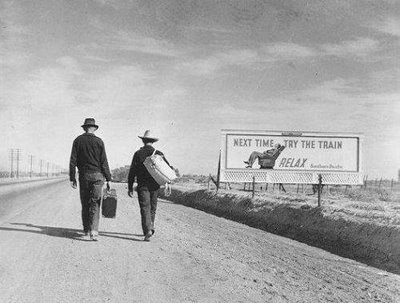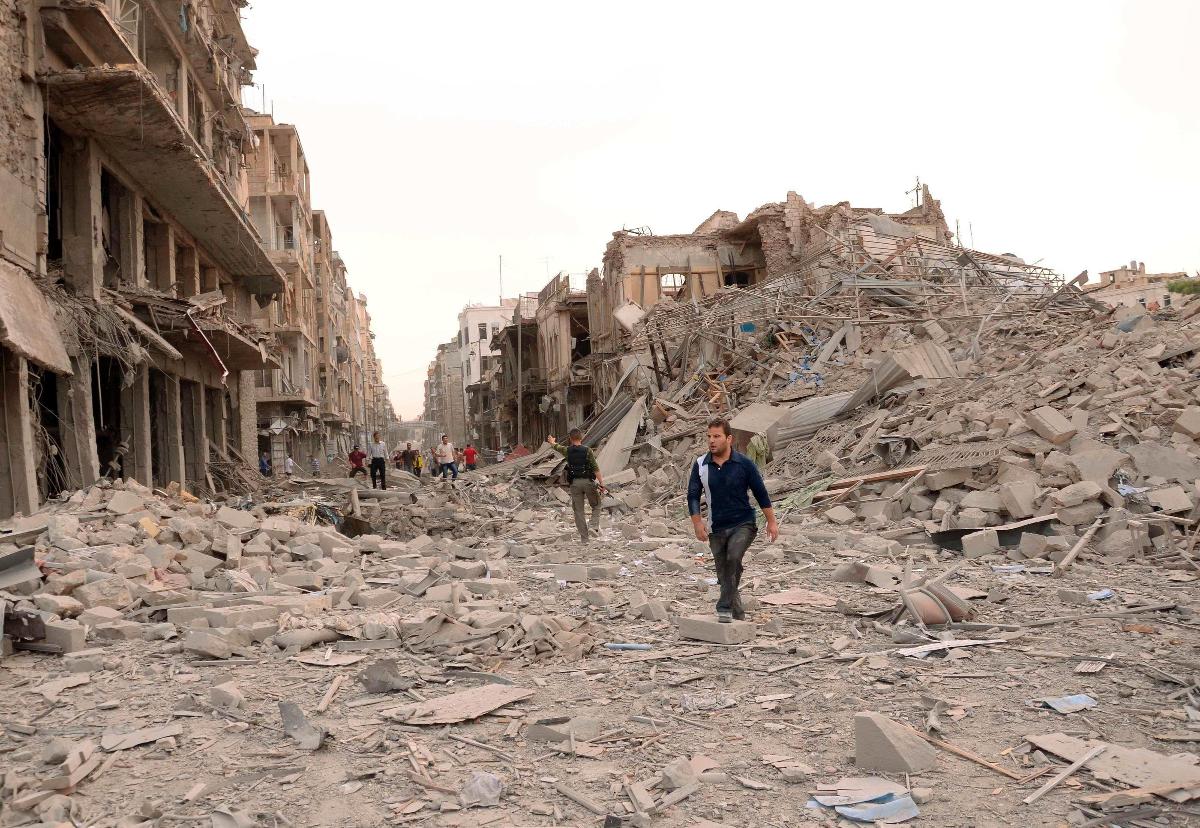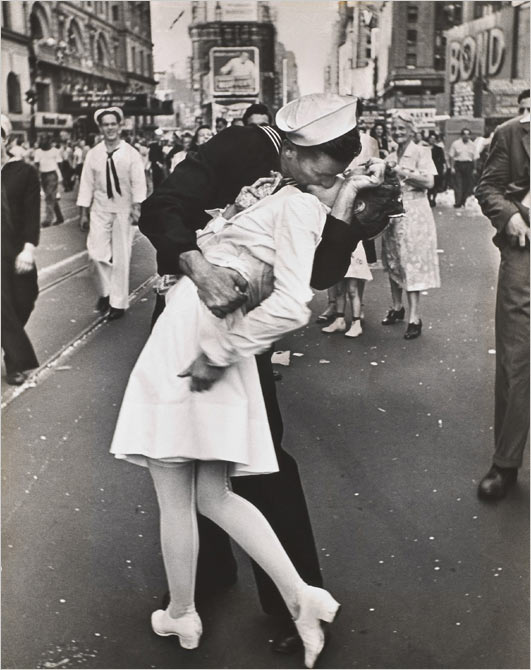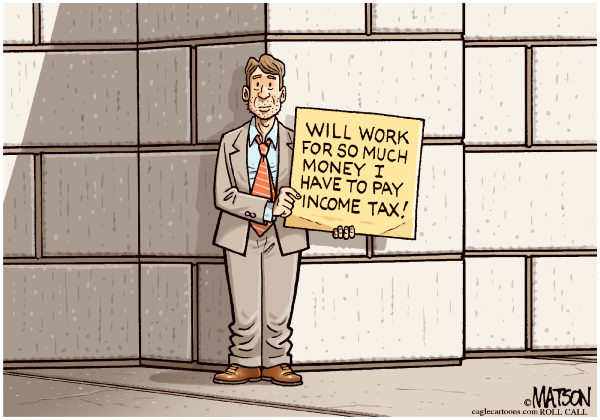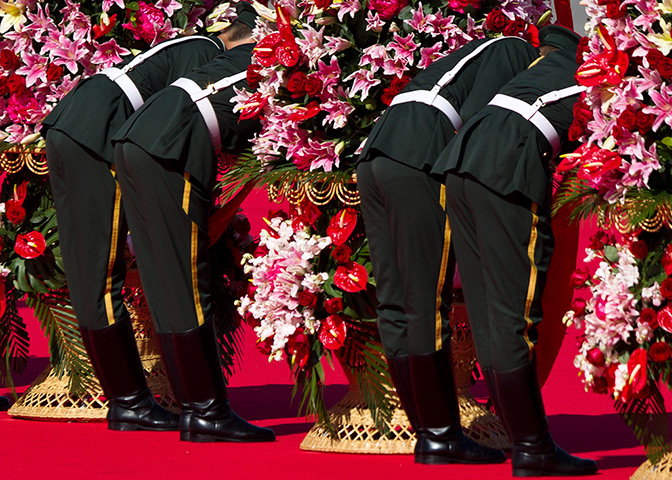I’ll get straight to the point: What can’t be seen in Afghanistan is no reason for being there. Now let’s consider how “seen” is more than a metaphor.
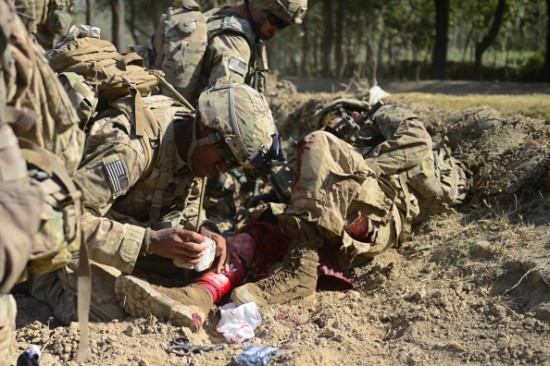
So, what can be seen? No one photo–no hundred photos–could answer that question, but let’s look at the image above, which appeared yesterday. A soldier is receiving emergency care after being wounded by a roadside bomb in Logar Province. The photo captures key features of US military behavior: the troops are thoroughly provisioned, very well trained, directly engaging the enemy, and disciplined under fire, and they take care of one another.
For all the conservative anxiety about letting African-Americans, then women (yes, they opposed that, too), and now Muslims and GLBT citizens serve in the military, you don’t have to worry about unit cohesion with this company, or any other. One soldier is tending carefully to one of the leg wounds, while another checks on the soldier himself, and it is easy to imagine (and confirmed by other photos) that the rest of the troop is deployed to make sure that everything gets taken care of, from the man down to the mission.
The uniforms include US flag arm patches, but that identification is well short of the patriotic rhetoric that put them there. Instead of grand pronouncements, we see dirt and gear. Instead of lofty projections about democratization, we see only a small swatch of terrain: grass, trees, grass, trees leading into the nondescript background.
Alan Trachtenberg has remarked that the shift from illustration to photography in the 19th century lead to “a loss of clarity about both the overall form of battles and the unfolding war as such and the political meaning of events” (Reading American Photographs, pp. 74-75). Thus, the realism that rightly displaced idealized illustrations of war came at the cost of a coherent narrative that would justify the fighting. Thus, it might well be that no photograph can provide a strategic rationale for war–although it certainly could challenge any rationale that substituted illusion for the facts on the ground.
In short, it might be that one could never “see” a reason for being in Afghanistan, and that the medium of photojournalism was biased against supporting any overarching rationale for war. One might think that war then should be left to military experts and political leaders: that is, to rational assessment of forces, strategic calculations, and the political will to accept those sacrifices that are needed on behalf of raison d’etat. But what if those reasons really aren’t there in the first place? What if the original reasons no longer apply, and we are left only with inertia, an unwillingness to accept sunk costs, political face-saving, and other examples of war’s well-documented ability to corrupt decision-making?
At that point, perhaps the inability to see grand purpose in a photograph could stand for the actual absence of purpose. And what if the photo also showed what happened when the battlefield no longer served the national interest: that is, how the soldiers rightly focus on the only good intentions left: doing their jobs well and caring for one another.
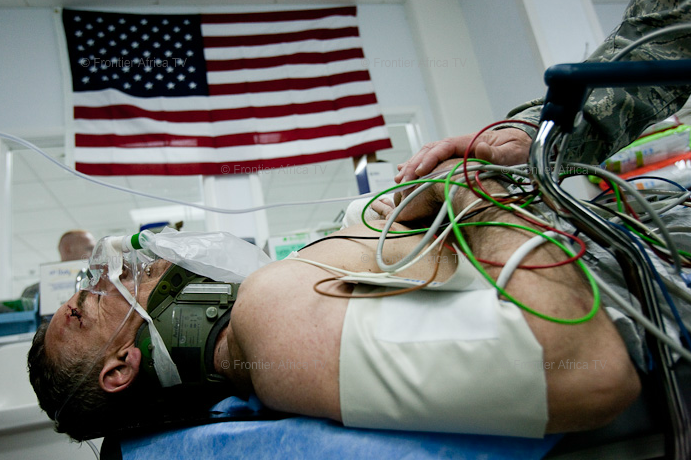
This older photograph, which just as well could be from any day this year, puts the problem in starker detail. The soldier is a lot worse off, and the medical response is ramped up as well. He was lucky enough to get to the Heath Craig Joint Theater Hospital at Bagram Airfield, Afghanistan. Again, we see key elements of military organization: both high-tech medical support and the caring attentiveness and reassurance of a fellow soldier, all in the service of nation. But while the flag was small and utilitarian in the first photo, here is is overlarge and distant. Whether too small or too big, it has been tacked on to what is really happening. (Note how the flag above hangs awkwardly over the more functional decor below, as useful as a politician’s bluster back home. There will be another reason it is there, however, as it has to compensate for the really bad news often occurring below.)
Sadly, the flag does not provide a reason to be there. Afghanistan once harbored terrorists who deserved to be punished, and were. But it no longer presents any threat to national security, while continued occupation has lead to the Taliban’s resurgence as a key player in local politics.
These photographs of American military sacrifice show much that is good about the US military effort in Afghanistan. But no matter where you look, it seems, you can’t see a reason for them to be there.
Photographs by Munir Liz Zaman/Getty Images and Patrick Barth/Frontier Africa TV.
0 Comments



